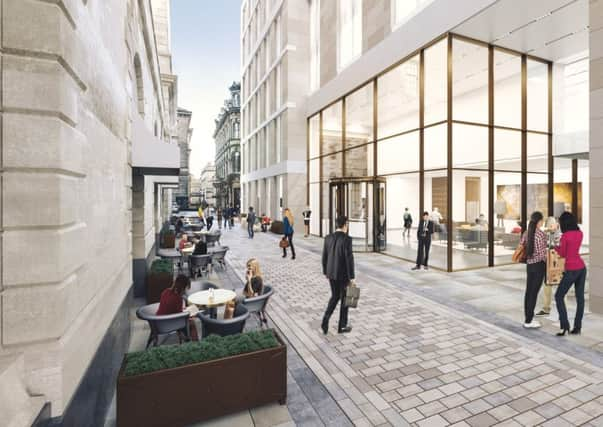Commercial property: Capital needs developments to act as spur for investment


However, the city’s growth as major commercial centre is severely hampered by a lack of office space.
Edinburgh’s office market has experienced a prolonged period of subdued development in spite of robust demand in recent years.
Advertisement
Hide AdAdvertisement
Hide AdWith a very limited pipeline of speculative development scheduled to complete this year and with overall vacancy rates sitting at 3.8 per cent, the lowest level in over ten years, there are no immediate signs of an improvement in the situation.
In order to accelerate development, we need to find solutions to the long-standing issues which are hindering development, one of which is a lack of available finance. Ever since 2008, developers have faced a restricted market for finance.
The major UK clearing banks have sought to reduce their exposure to the office sector and to speculative development in particular.
A small number of German lenders will fund speculative schemes, but their appetite is limited to the strongest sponsors and the major city centres.
Some debt fund lenders will lend on speculative developments but at a higher cost.
Lenders have generally preferred sectors where they perceive less void risk – markets including residential, hotels, student housing and industrial.
They also want assurance that income is quickly forthcoming on scheme completion.
However, the rent free incentive periods that are commonplace in the office market mean that other sectors are income-producing more quickly.
Advertisement
Hide AdAdvertisement
Hide AdCompetition from other uses and higher construction costs are also holding back development.
Recent growth in residential values has exceeded growth in commercial values in many UK cities, including Edinburgh.
Falling unemployment and skills shortages have made it harder to employ contractors and the renewal of the labour force has not kept pace with demand.
Furthermore, the drop in the value of the pound has pushed up the price of imported materials.
Investors will see headline rents grow steadily due to this lack of development.
In Edinburgh, rents are predicted to grow by 2.5 per cent annually until 2021, which will in turn encourage occupiers to pre-let space, adding further pressure to a stretched market.
Taking into account the likelihood of continued letting of schemes under construction, the pipeline for this year in Edinburgh looks very thin and this will exacerbate existing supply shortages.
In terms of supply, only three new developments are on site to be delivered over the next three years, including Semple Street this year and the Mint Building in early 2019.
Advertisement
Hide AdAdvertisement
Hide AdIn the near term, a lack of development will drive increased refurbishment activity, but long term, cities like Edinburgh and Glasgow need to see new development come forward to spur inward investment.
Cameron Stott is director at
JLL Scotland